1999 Mitsubishi Nimbus Reviews
You'll find all our 1999 Mitsubishi Nimbus reviews right here. 1999 Mitsubishi Nimbus prices range from $2,860 for the Nimbus to $4,620 for the Nimbus .
Our reviews offer detailed analysis of the 's features, design, practicality, fuel consumption, engine and transmission, safety, ownership and what it's like to drive.
The most recent reviews sit up the top of the page, but if you're looking for an older model year or shopping for a used car, scroll down to find Mitsubishi dating back as far as 1984.
Or, if you just want to read the latest news about the Mitsubishi Nimbus, you'll find it all here.
Mitsubishi Reviews and News

New Mitsubishi Pajero, Lancer Evo, Delica - our wish list of cars the brand needs in Australia | Opinion
Read the article
By Laura Berry · 05 Jul 2025
Which Mitsubishi do you wish would make a comeback? Pajero? Lancer? Well, Mitsubishi is currently undertaking a massive overhaul of its Australian line-up with several new models to come to fill the gaps. So while they're at it we’ve put together our wishlist of cars they really should really revive or bring here. The changes to the Australian Design rules (ADRs) in March this year meant Mitsubishi had to axe three vehicles from its local lineup. These were the ASX small SUV, the bigger Eclipse Cross SUV and the Pajero Sport off-roader. This leaves Mitsubishi with just two cars on sale in Australia — the Triton ute and Outlander mid-sized SUV. Meanwhile Toyota has 23 models on sale.Now we're not suggesting that Mitsubishi needs another 21 models, Ford is managing just fine on pretty much the Ranger, Everest and Mustang, but I definitely think there are some essentials the brand could use and a few dream cars while we're at it.Probably the most obvious model Mitsubishi needs right now is the Pajero. Yep once-upon-a-1990s the Toyota Prado and Mitsubishi Pajero wrestled for dominance all over Australia, from the outback to suburbia. The Pajero eventually lost the battle and was axed by Mitsubishi in 2020 … or so we thought! Imagine the comeback. Just when the new generation Prado had arrived and was still gloating, the Pajero could make its return. Sure the Pajero Sport is coming back in 2026, but that’s a Ford Everest rival. The beauty is Mitsubishi could easily plonk another, posher-looking SUV body on the ladder frame and call it the Pajero. And they’ve already got the badges made up. You just just take the “Sport” bit off. Think of the savings.Next on our wish list is not really a car that would sell in high numbers, but it'd be the halo car in many ways the brand needs so badly right now — a reborn Lancer, and yes, with an Evolution grade as well. Or maybe just a standalone Lancer Evo XI. I think we’re up to XI, I can't remember but I tested the very final one in 2015.Back in the final glory days of Ford Falcon versus Holden Commodore there were two other tribes going to war: Subaru WRX v Mitsubishi Lancer Evo. These days the WRX lives on, but it looks so lonely without the Lancer EVO to play with.Finally, and given the number of grey imports we see of this car, Mitsubishi needs to add the Delica people mover to its Aussie line-up. What’s not to like about a high-riding all-wheel drive six-seater van?A sixth-generation of the people mover is expected in the next two years and whether it looks anything like the futuristic and silly Delica concept Mitsubishi revealed at the 2023 Tokyo Motorshow is yet to be seen.A wishlist for Mitsubishi could go one forever, who wouldn’t want to see the Colt come back, or the Cordia Turbo? Or the 3000GT?In reality the ASX will be back and so too will the Pajero Sport, and that might be all Mitsubishi needs as it faces bigger problems. Challenges like how on Earth will it adapt to a rapidly changing market that’s been inundated with excellent electric vehicles from brands which hardly existed five years ago. Currently Mitsubishi doesn’t even sell one purely electric vehicle in Australia at all.
.jpg)
Chinese brand carmakers should be scared of: GWM establishes a firm lead among Chinese brands, leapfrogging MG and closing in on Mitsubishi | Analysis
Read the article
By Tom White · 04 Jul 2025
The latest Australian new-car sales figures show one clear leader among Chinese brands. GWM could be the first one to crack the top five for year-to-date sales in Australia as it overtakes MG and Isuzu.Japanese and Korean brands along with Ford have dominated for the past decade with their range of utes and SUVs drawing in plenty of buyers.Now manufacturers from China are storming up the sales charts. The original success story was MG, which rapidly fought its way to the top 10 off the back of an appealing array of cars at price points now abandoned by rivals, and a steady supply of new vehicles during COVID-era shortages.MG has now been surpassed by one of the longest-serving Chinese automakers in Australia, GWM.GWM has sold 25,189 new vehicles in Australia through the first six months of this year, which places it just ahead of both MG (21,674) and Isuzu (21,883).This puts it in a solid seventh position in Australia, with something of a gap between it and Mitsubishi in sixth (33,379).Mitsubishi will be looking over its shoulder in the second half of this year with stock of its ASX, Eclipse Cross and Pajero Sport SUVs runs dry, as the Japanese brand awaits new generation vehicles.GWM itself is rapidly being chased down by BYD (23,335), with its rate of growth at 144.6 per cent year-on-year much higher than that of GWM, which is up what would normally be an impressive 17 per cent.The rise of both GWM and BYD is thanks to a rapidly expanded or updated model line-up, which includes in-demand vehicles not being fulfilled by big name players.Both GWM and BYD now offer a plug-in hybrid (PHEV) ute, as well as a range of sharply priced PHEV SUVs (BYD), hybrid SUVs and off-roaders (GWM), and affordable electric cars.MG has languished slightly off the loss of its bargain-basement previous-generation MG3 hatch, ZS small SUV, and HS mid-sizer, which have all been replaced by more expensive new-generation offerings.MG is no doubt hoping its Kluger-rivalling QS large SUV and incoming U9 ute will be major volume additions in the latter part of the year. They will also be joined by the Camry-rivalling MG7 sedan.The next-biggest Chinese challenger, Chery, is also leaping up the sales charts, up an unprecedented 228.8 per cent so far in 2025 thanks to its bargain Tiggo 7 and Tiggo 8 mid-size SUV pair, and the Tiggo 4 small SUV which seems to have replaced the MG ZS as the bargain entry-level SUV of choice. It is still several thousand units away from a top-10 entry, but will almost certainly be within striking distance in 2026 if its growth continues.The rise of MG, GWM, and BYD has seen Nissan join Subaru as top-10 has-beens.The biggest gap remains between Toyota and the rest, with the 'Big T' still having moved a steady 120,978 units in 2025.
.jpg)
A lack of ambition by 'legacy' car brands like Toyota and BMW will hand Chinese brands like BYD, Zeekr and GWM victory in Australia | Opinion
Read the article
By Tom White · 15 Jun 2025
Chinese cars aren’t just about being the budget option anymore, and their ability to act fast, take risks and disregard the status quo is an existential threat to some of the world’s biggest manufacturers in Australia.I’ve increasingly had these thoughts as I’ve been driving ambitious new Chinese cars week-to-week against new offerings from their more established European, Japanese, and Korean rivals.It’s not as though these new offerings aren’t riddled with issues, some of them mundane and others extremely frustrating as you can read about in our recent reviews of cars like the Leapmotor C10, Geely EX-5, and Jaecoo J8. But outside the pricing and sheer speed to market, it’s the complete lack of fear to try something new which is making them stand out even in the most congested market segments.My favourite recent examples include Zeekr’s wild 009 performance people mover and the smaller but absurdly modular Mix, as well as the 7X electric mid-size SUV.There’s XPeng’s range of cars, from the surprisingly tidy G6, which has already arrived in Australia, alongside the soon-to-arrive G9 large SUV and Mona M03 sedan.Most recently there’s the wild GWM Tank 700, a $100k-plus twin-turbo V6 plug-in hybrid off-road monster clearly designed to rival some of the biggest names in the industry like G-Wagen, Defender and LandCruiser.That’s not to mention BYD’s mould-breaking Shark 6 plug-in hybrid ute, which has single-handedly upended the predominantly diesel segment and suddenly made heroes of the post-Falcon and Commodore era like the HiLux and D-Max look relatively antiquated.These new Chinese options have a lot in common. They have ambitious futuristic designs, feature-laden cabins with clever software features (albeit not all of them good) and a complete disregard for established industry norms.Performance people mover? Any other manufacturer would say a resounding ‘no’ to that, but Zeekr and XPeng both reckon they can simply create the hype for one out of thin air.Even just the concept of people movers in general. Toyota’s local division constantly dismisses the idea of bringing its luxurious Alphard to our market, despite the fact that it consistently ranks as Australia’s most popular grey import and sold in numbers orders of magnitude greater than the now-discontinued and diesel-only Granvia, which the brand offered as an also-ran alternative thanks to its parts commonality with the HiAce.Yet soon Australia will be again flooded with people mover offerings from the likes of BYD’s Denza brand as well as Xpeng and Zeekr, an existential threat to the Kia Carnival, which has remained largely unchallenged for the last few years.Even the entire concept of a Chinese semi-luxury brand like Jaecoo or Zeekr would have been scoffed at a handful of years ago, yet here they are, and not with one or two models, but fully-fledged line-ups.You can go even more granular than that. Recently I had a new Suzuki Swift ‘hybrid’ as a long-termer. It’s a sweet little car and technically ticks a lot of boxes for the intended buyer. The issue? It goes into battle against the new MG3.There’s a few problems with this. Firstly, the Suzuki feels like a facelift of the previous car, rather than a new-generation as claimed, and secondly, it’s not a ‘real hybrid’ in the sense that there’s no electric motor large enough to independently drive the wheels.In comparison, the MG launches with a clean-sheet, screen-centric interior (for better or worse), and an interesting dedicated hybrid transmission system with plenty of electric driving potential. Again, the MG is far from perfect, but it’s the relative ambition on show which could make or break a sale.Another example I drove recently was the Audi Q6 e-tron. It’s a great luxury mid-size electric SUV. The problem is, Volkswagen Group made a big song and dance about its brand-new PPE platform as though it was going to revolutionize the space, and the problem is the end product is just good when it needs to be stellar.In comparison, the Zeekr 7X I drove at the end of 2024 in China completely outgunned my expectations. It’s a similar offering; a ground-up new mid-size luxury electric SUV, but it brings a surprisingly plush interior (in some aspects, nicer than the Audi), with very clever software features, a coherent and innovative design and solid motor and battery specs.Zeekr was so confident we’d be impressed by it, they brought a current BMW X5 for us to test it against, and, to put it simply, the 7X felt much more a product of today. Plus it looks set to cost closer to $75k than the $100k of the base Q6.Now I'll stop at this point to add the caveat that just because these new offerings are ambitious - whether it's their design, price, market segment, or features - they're not always objectively better vehicles.The point is: at both ends of the price spectrum now, Chinese brands are putting the pressure on and tempting buyers away at a time where traditional brands can't afford to lose their audience.You don’t even need to take my word for it. It’s clear as day in the latest VFACTs figures for new car registrations in Australia.At the low end of the market, the squeeze is undeniable. The once-dominating Suzuki is down 19.8 per cent this year as it faces particular pressure from both MG and Chery, and cult hero SsangYong from Korea is taking a big hit as GWM and JAC muscle in on the territory of its humble Musso ute, the brand’s sales also dropping 27.6 per cent year-on-year.Even Mitsubishi is struggling to keep up, its affordable ASX now discontinued and new competition particularly fierce in the same segments as its core Triton ute and Outlander mid-sizer.BYD’s surge to the front of the EV charts has the once-dominant Tesla on the ropes for the first time, and it’s clear that some niche parts of the market are struggling to deal with the new car landscape, with Volvo down 21 per cent year-on-year and Jeep down 20.8 per cent.Granted it’s hard to attribute new Chinese players purely to these issues, with some ageing product no doubt to blame, but it’s worth pondering whether the lost volume will ever be recovered with so much competition tempting buyers away.Some traditional players are fairing better than others. Toyota is stable thanks to a steady stream of refreshed versions of its popular range of hybrids (although a question mark hangs above its ageing HiLux), while Kia and Hyundai take a different path, leaning into offering a diverse range of hybrids and electric cars with their own ambitious design allure.None of this will last. Despite a new range of ambitious products, even the once trailblazing MG is feeling a bit of heat, down 12.7 per cent this year as it tries to outgrow its cheap and cheerful phase, the mantle of which has been taken up by Chery.No doubt the same fate could await its contemporaries, as even more Chinese brands have designs on the Australian market - widely seen as a microcosm of other markets like the US and Europe - a perfect testbed for global expansion plans.Eventually the dust will settle, but how many automakers - new or old - will survive an increasingly intense race to 2030 seems impossible to tell.
.jpg)
COVID-era wait times for new cars could be back: Resource bottleneck for key car components have some car manufacturers in 'panic' - but the pain won't be spread evenly
Read the article
By Tom White · 11 Jun 2025
As the trade war between the US and China intensifies, new reports from auto industry suppliers cast a dark cloud over important component supply for new cars.Beijing has placed some key minerals on an ‘export control list’ as part of a response to the Trump administration’s increased tariffs on goods imported from China. This has disrupted global supply chains and could potentially lead to the same six-month-plus wait times for new vehicles, which was experienced during COVID-related factory shut-downs and supply disruptions.Seven of the minerals on the list for export restrictions are rare earths — a group of materials used for the production of alloys and magnets — which are key components in many automotive parts from mirrors to fluid pumps, but particularly permanent magnets used in EV and hybrid motors and alternators for combustion cars.China is responsible for up to 90 per cent of production of these key components, and Reuters cited executives from suppliers who said the “industry was in full panic” over restrictions on supply.The publication also cited analysts who said the knock-on effects of the restrictions could force automakers to make cars without certain parts and park them until they become available - in echoes of similar practices that took place during the COVID-era supply disruptions. During the COVID-era and subsequent microprocessor shortage, some cars were delivered without various difficult-to-acquire features like blind spot monitoring, either through the introduction of limited variants or tweaks to standard specifications.How bad could it get? During the peak of the COVID-19 era shortages, models in high demand such as the Toyota RAV4 were attracting wait times of more than 24 months.Fresh supply shortages could start as soon as July as the world’s automakers analyse the impact on their supply chains.It seems automakers from Europe, America, and Japan will be most exposed to these issues, handing Chinese automakers yet another advantage over their rivals.Reuters also reported Hyundai Group and its suppliers have stockpiled between six to twelve months of rare earths.Another round of supply shortages or price increases to traditionally popular brands could continue to transform the landscape of new cars in Australia. During the microprocessor shortage, less exposed brands such as MG and GWM started to leap up the sales charts at the expense of others, a trend that hasn’t been reversed since.The same Reuters report said some companies seeking to shake China’s hold on the supply of magnets and key materials, either through recycling existing materials or building new parts which are rare-earth-free, have seen a boost in interest since restrictions began in April, but it could take years for these suppliers to have the scale be able to meet demand or be cost competitive with Chinese exporters.As usual, Australia will be particularly exposed to any supply-related changes, as our relatively low-volume market tends to be far down on the priority list for the largest groups out of Japan and Europe.During the previous new-car shortages, even prices of used cars skyrocketed as buyers couldn't wait to source individual transport away from a risk of being exposed to COVID in a double-whammy effect. The effect on used car prices in some segments has never recovered to pre-covid levels.
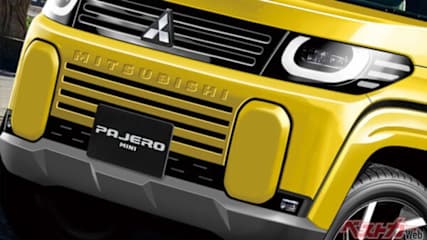
Forget the mini Toyota LandCruiser FJ and 2026 Suzuki Jimny: Mini Mitsubishi Pajero takes shape as tough little 4WD with production firming for next year
Read the article
By Dom Tripolone · 11 Jun 2025
A mini 4WD revolution is underway with a wave of cut-price, cute and capable off-roaders in the works.
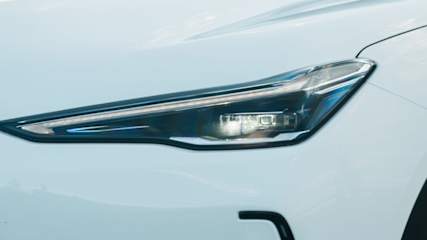
Save thousands with these new car deals: All the end of financial year deals from car brands in Australia
Read the article
By Jack Quick · 01 Jun 2025
It’s EOFY time again!
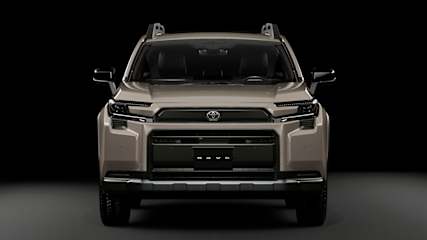
2026 Toyota RAV4 plug-in hybrid comparison: How will the game-changing new car shape up against well-established rivals in the 2025 BYD Sealion 6, Mitsubishi Outlander PHEV and GWM Haval H6GT Ultra PHEV?
Read the article
By Samuel Irvine · 23 May 2025
Toyota's first plug-in hybrid model for Australia is on track to arrive locally by the first half of 2026 following the sixth-generation RAV4's reveal.
.jpg)
Aussie tweaked SUV taking on the world: Popular family SUV the 2025 Mitsubishi Outlander now thousands more expensive as it arrives in showrooms to battle the Toyota RAV4, Mazda CX-5 and Hyundai Tucson
Read the article
By Dom Tripolone · 20 May 2025
Mitsubishi is updating its petrol-powered Outlander family SUV range.
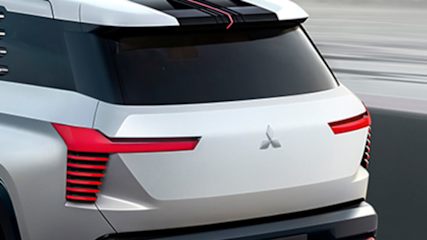
Mitsubishi's long awaited missing piece to launch soon: New three-row SUV to launch in the next 12 months, but will this 2025 Chery Tiggo 8 Pro, Hyundai Palisade, Kia Sorento, MG QS, Nissan Pathfinder and Toyota Kluger rival come to Australia?
Read the article
By Jack Quick · 15 May 2025
Mitsubishi plans to launch a new three-row SUV during the next 12 months, but if you’re expecting it to be a new Pajero or Pajero Sport, think again.
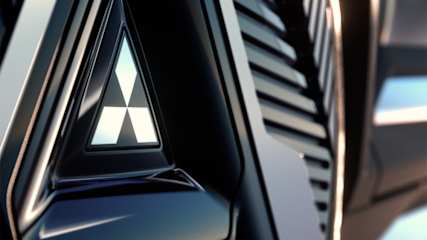
Next-gen Mitsubishi Eclipse Cross confirmed as an electric SUV rival to the Chery Omoda E5, Hyundai Kona Electric, Kia EV3, MG S5 EV, Volvo EX30 and Zeekr X, but will it come to Australia?
Read the article
By Jack Quick · 14 May 2025
Mitsubishi has confirmed it will unveil a new-generation Eclipse Cross in September, though it’ll be a big departure from the current car.This new Eclipse Cross will be an all-electric SUV that will compete in the European C-SUV segment. This means it’ll be a similar size to the Nissan Qashqai, Hyundai Tucson and Volkswagen Tiguan.The Japanese carmaker said this new Eclipse Cross EV will sit alongside the new Grandis and Outlander PHEV in its European lineup.It’ll be built in Europe by Renault Group at its Ampere ElectriCity plant in Douai, France. This essentially confirms the Eclipse Cross EV will be a rebadged Renault.This plant currently produces the Renault Megane E-Tech, 5 E-Tech, as well as the Scenic E-Tech. It’s expected the latter will form the basis of the new Eclipse Cross.This is further confirmed thanks to the short 11-second teaser video Mitsubishi Motors Europe uploaded to social media. It shows the Eclipse Cross EV has the same door handles as the Renault.Mitsubishi has confirmed it will offer two versions of the Eclipse Cross EV. A long-range variant will launch in Europe in the fourth quarter of 2025, followed by a mid-range version in 2026.The Renault Scenic E-Tech is currently available with two electric powertrain and battery configurations.The standard range version has a single electric motor that produces 125kW and 280Nm and is fed by a 60kWh battery. WLTP claimed range for this variant is 420km.The extended range version has a more powerful 160kW/300Nm electric motor and is fed by a larger 87kWh battery pack. WLTP claimed range for this variant is over 620km.Mitsubishi has confirmed it’ll have a “cutting-edge” multimedia system with Google Built-in, as well as the “latest suite” of advanced driver assist systems (ADAS).Although the new Mitsubishi Eclipse Cross EV has been confirmed for Europe, it’s unclear if it will come to Australia.The outgoing Mitsubishi Eclipse Cross, along with the current ASX and Pajero Sport were recently axed in Australia as they don’t meet Australian Design Rule (ADR) 98/00, which mandates specific technical requirements for autonomous emergency braking (AEB).The Japanese carmaker has confirmed it’ll launch a new-generation ASX, a rebadged Renault Captur, in Australia at some point.Mitsubishi Australia also recently announced it signed a memorandum of understanding with Taiwanese manufacturer Foxtronn to co-develop and sell an EV exclusively for the Australian and New Zealand markets. It’s set to launch in the second half of 2026.Even if the Mitsubishi Eclipse Cross EV doesn’t come to Australia, given it’ll likely be based on Renault-Nissan-Mitsubishi Alliance’s AmpR Medium (previously CMF-EV) platform, there are already cars on sale locally that are based on it.This includes the Renault Megane E-Tech, and will soon include the Nissan Ariya as this is set to go on sale in Australia later in 2025.




